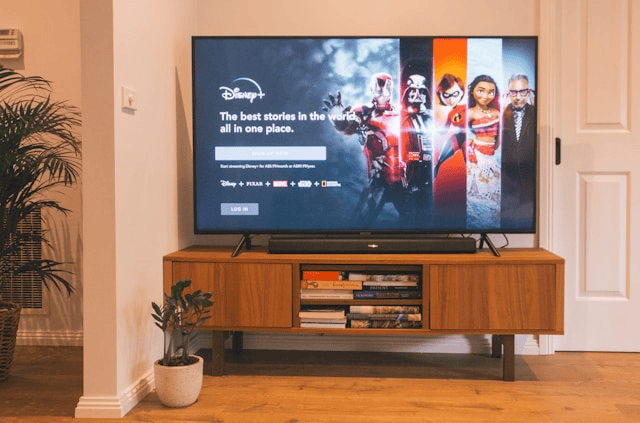The way we consume movies has changed dramatically over the past decade. Once a ritual that involved popcorn, dark rooms, and a big screen, watching a film now often means curling up on the couch with a remote and a streaming service. The shift from theater to streaming isn’t just a temporary trend it’s reshaping the entire film industry. But does this mean the end of traditional cinemas, or is there still room for both worlds to thrive?
In this article, we’ll explore the future of movie theaters, the dominance of streaming platforms, evolving consumer behavior, and what the film industry might look like in the coming years.
The Rise of Streaming Platforms
The rise of streaming services like Netflix, Amazon Prime Video, Disney+, Apple TV+, and HBO Max has revolutionized entertainment. These platforms offer vast libraries of films and shows on demand, tailored to individual preferences through algorithms and available 24/7 across devices.
Streaming took off even faster during the COVID-19 pandemic, when theaters were closed and studios scrambled to release films digitally. This period accelerated the adoption of subscription-based entertainment and changed how audiences expect to access content.
Original productions like Stranger Things, The Crown, and The Mandalorian demonstrated that streaming platforms could deliver cinematic-quality experiences at home. These platforms now compete head-to-head with traditional studios, not just in volume but in prestige, with streaming originals regularly dominating awards shows and critical discussions.
The Traditional Theater Experience
Despite the convenience of at-home viewing, movie theaters offer something that streaming can’t fully replicate: a communal, immersive experience.
Cinemas have long been cultural institutions. From date nights to blockbuster premieres, theaters bring people together in a shared emotional experience that’s hard to reproduce in a living room. Enhanced experiences like IMAX, 4DX, and Dolby Cinema add visual and sensory depth, especially for high-budget action or sci-fi films.
There’s also something nostalgic and ceremonial about going to the movies standing in line, buying tickets, settling in as the lights dim. For many, that atmosphere is irreplaceable.
While attendance dipped sharply during the pandemic, recent box office successes like Top Gun: Maverick, Spider-Man: No Way Home, and Barbie proved that people will still show up for the right film, especially when the theatrical experience feels special.
Economic Impact on Studios and Creators
The shift from theater to streaming has changed the financial models behind movie production and distribution.
Traditionally, the box office was the primary way to recoup and profit from film budgets. However, streaming platforms operate on subscription revenue, where the value of a film isn’t directly tied to ticket sales but to subscriber retention and growth.
This has both benefits and downsides for creators. On one hand, streaming platforms offer more freedom and fewer restrictions, enabling more experimental or diverse content. On the other hand, they often pay flat licensing or production fees, meaning filmmakers may miss out on long-term revenue that blockbuster hits could generate in theaters.
Studios now experiment with hybrid release strategies simultaneous theater and streaming releases, shortened theatrical windows, or even direct-to-streaming exclusives. These movie release strategies reflect the ongoing search for a sustainable model in a fragmented market.
Consumer Preferences and Behavior
The future of movie theaters and streaming also hinges on what audiences want.
Today’s viewers value convenience. Streaming offers instant access, no travel, no extra costs for snacks or parking, and the freedom to pause or watch on demand. For busy individuals or families, that flexibility is hard to beat.
However, many people still crave the event-like nature of going to the theater, especially for big-budget films, horror, or anything visually rich. For date nights, family outings, or film festivals, theaters provide an experience that home viewing can’t match.
Demographics play a role too. Younger audiences tend to lean more heavily on streaming, while older generations may remain loyal to theaters. Globally, streaming vs theater trends also vary markets like China and India continue to invest heavily in cinemas, while the U.S. sees more divergence.
Hybrid Models and Industry Experiments
As the battle between streaming platforms and cinemas continues, the industry is adopting hybrid models to meet consumers where they are.
Some studios have introduced “day-and-date” releases where a film premieres on streaming and in theaters on the same day. Warner Bros. took this route with its 2021 slate on HBO Max, stirring controversy but also boosting digital engagement.
Others favor limited theatrical runs to qualify for awards or create buzz before moving titles online. For example, Glass Onion: A Knives Out Mystery had a short theatrical debut before hitting Netflix, creating anticipation and press coverage.
This hybrid strategy may become the norm, offering audiences choice while maximizing exposure for films.
What’s the Future?
So, what does the future hold in the debate of streaming vs theater?
Theaters are unlikely to disappear completely. Instead, they may evolve into more premium, event-driven experiences focused on spectacle and social engagement. Independent cinemas and boutique theaters may also thrive by offering curated content and community-driven programming.
Streaming, meanwhile, will continue to dominate the everyday entertainment landscape. As technology advances, we may even see more immersive at-home options virtual reality screenings, interactive storytelling, or personalized viewing experiences.
Ultimately, the most likely outcome is a coexistence where both formats serve different needs. The film industry will need to adapt continuously, balancing blockbuster appeal with digital convenience, and tailoring content strategies to diverse audiences.
Conclusion
The future of movie theaters and streaming platforms isn’t about one replacing the other it’s about choice, experience, and evolution. As technology, consumer habits, and business models shift, both formats will need to innovate and adapt. Whether you’re a die-hard cinema-goer or a loyal streamer, one thing is clear: storytelling will remain at the heart of it all, no matter how or where it’s consumed.

